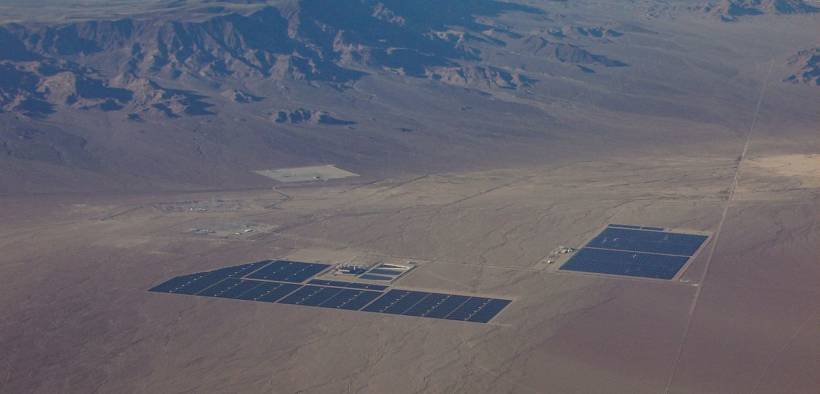Largest Solar Project Ever in U.S. History Approved

The largest solar project in U.S. history was just approved.
On May 11, the Bureau of Land Management (BLM) and the Department of the Interior (DOI) gave approval for a 690-megawatt (MW) Gemini Solar + Battery Storage project the be built in Clark County, Nevada.
Gemini
Construction on Gemini will begin later this year and should be completed in 2022 or 2023. When it’s finished it will be the largest solar project in the U.S. and one of the biggest of its kind in the world. The solar array and battery storage will spread across more than 7000 acres of public land, and generate power for up to 260,000 homes near Las Vegas.
The project is being developed by solar company Arevia Power and is backed by Quinbrook Infrastructure Partners, an investment firm that focuses on low carbon and renewable energy. NV Energy has already signed a 25-year lease to buy power from Gemini when it’s done. According to the press release issued by Quinbrook and Arevia this means “all of the energy generated by the project will stay in Nevada.” The construction of the project could create up to 700 jobs, once built roughly 20 workers will be required to run it.
Solar on Public Lands
BLM approved the first solar project in 2010 and since then has approved 25, with the rate of approval escalating in recent years. The day after approving Gemini the BLM approved another smaller project in California. The rapid fire approval of solar projects on public land is part of the Western Solar Plan, which was created in 2012 to identify areas of BLM land in the West with high potential for solar. In 2017 the Solar and Wind Energy Rule was created to streamline the process of approval.
Building solar farms on public land presents challenges and is not without opposition. The BLM’s mission is to “to sustain the health, diversity, and productivity of public lands for the use and enjoyment of present and future generations.” Fulfilling that mission often means managing different priorities that may be in conflict. All projects on public land must undergo a National Environmental Policy Act Review. Gemini passed its review and a final Environmental Impact Statement was issued in December of 2019 but there were other hurdles. The land that Gemini will occupy includes an area of historical significance which was traversed by early European American settlers and the project was delayed in earlier this year over the potential historical impact. The area in question is also home to desert tortoises, a threatened species. Several dozen of the tortoises will have to be relocated in order to accommodate the construction of the project. Before construction begins a number of Native American tribes that live in the area will also have to give the go ahead. Consulting with the tribes was part of the EIS and approval process and it seems that any areas of conflict have been resolved so their sign off is expected.
America’s Solar Future
When it starts producing power Gemini will create an increase in U.S. solar capacity of almost 10%. However, even with Gemini and other new projects like it the U.S. still falls well short of where other nations are in terms of solar power generation. The U.S. gets about 2.8% of it’s power from solar, on par with Romania, and just below the global average of 3%. Germany generates 8.6%.
The BLM’s push towards solar and wind on public land will play a role in increasing solar use in the U.S. but because electric utilities are legislated at the state and local level the country’s solar future will depend on each state taking action. Hawaii, the U.S. state using the most solar currently, generates over 30% of its power from solar, which includes high levels of roof top solar as well as solar farms. Being in the tropics Hawaii obviously has a better capacity for solar than many U.S. states, but there are other factors. In Hawaii electricity is extremely expensive which helps shift the cost benefit analysis towards solar. The state has also set aggressive renewable energy goals and supported them with legislation and funding. Vermont has also set high goals for renewable energy and created policy to back them. The state currently gets over 14% of their electricity from solar, despite being far from the tropics.
Nevada already gets over 10% of its power from solar. Once Gemini is online that percentage will increase, potentially by up to 50%. Gemini will be a historic milestone for solar in the U.S. and if successful may pave the way for more very large scale solar projects on other public land in the near future.








Timely article, this. According to the U.S. Energy Information Administration, the US production of renewable energy will eclipse coals’ production of NRG for the first time ever. Solar, wind, hydroelectric have generated more electricity than coal for 90 straight days. As you state ,-there are competing interests, but combined with current trends I agree,- this does pave the way for more.